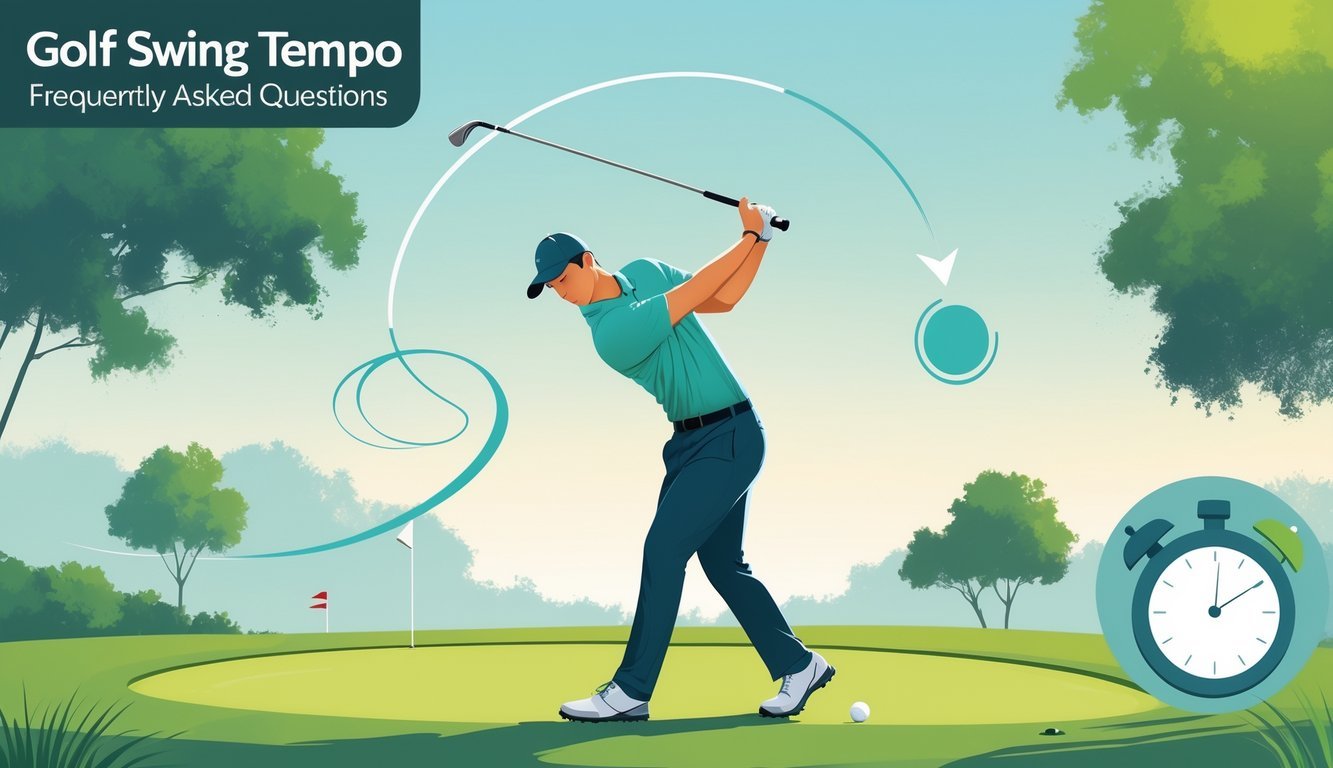PsychNewsDaily Publishers
100 Summit Drive
Burlington, MA, 01803
Telephone: (320) 349-2484
PsychNewsDaily Publishers
100 Summit Drive
Burlington, MA, 01803
Telephone: (320) 349-2484
Swing tempo is crucial for maintaining rhythm and timing in golf, enhancing shot control, consistency, and overall confidence during play. Focus on smooth transitions between swings.

Your golf swing tempo is all about the rhythm and speed you use when you swing the club.
If you keep your tempo smooth and consistent, you’ll hit the ball better and have way more control over your shots. The actual speed of your swing doesn’t matter as much as the timing between your backswing and downswing.
A lot of golfers get tripped up by tempo because they focus too hard on power or technique, and forget about rhythm.
If you think of your swing like a steady beat or use a simple phrase to pace yourself, you’ll probably notice your swing tempo and your overall game improve. Getting into that groove can make each shot feel more natural and way more confident.
You don’t need fancy gadgets to start working on your tempo. Just practice, sync up your movements, and trust your own rhythm—pretty soon, you’ll see more consistent results out on the course.

If you want to play good golf, you need to know how to control your swing speed and keep things smooth.
Your swing tempo connects your backswing, downswing, and the transition in between. This creates a rhythm you can actually repeat, which means better control and timing.
This rhythm lets you repeat your swing with better control and timing.
Swing tempo is just the pace you use as you move through your golf swing. It’s not so much about being fast or slow—what matters is that you move in a smooth, controlled flow from start to finish.
A lot of people talk about timing ratios. Most pros say the backswing should take about three times longer than the downswing. So, if your downswing takes 1 second, your backswing should take about 3 seconds.
That 3:1 ratio keeps your swing steady and balanced.
Good tempo feels natural and keeps your body relaxed. If you rush, you might lose control or power.
If you go too slow, your timing can get thrown off and your shots can get inconsistent.
You really want to focus on three main parts: the backswing, the transition, and the downswing.
Each part should flow into the next. When your tempo’s on point, the whole swing feels like one connected motion.
If you want repeatable, reliable shots, you need consistent tempo.
When you swing with a steady rhythm, you control the club better and your timing improves. That means you’ll hit the ball more accurately and probably get a bit more power, too.
Rhythm in golf is a lot like the beat in music. Rush it, and everything falls apart. Keep it steady, and your body remembers the right sequence.
You can practice your tempo with a metronome or by using tempo beats. That makes your swing easier to repeat, even when you’re feeling the pressure out there.

Finding the right rhythm in your golf swing takes some practice and a bit of focus.
Work on drills to build muscle memory, calm your nerves during tricky shots, and tweak your body and grip for more consistency.
Different shots might need different tempos, and things like your equipment or fitness can really affect your swing.
Start by practicing swings without even hitting a ball. Take slow, smooth swings next to the ball to get comfortable and build a repeatable tempo.
You can use a metronome or a tempo app to keep a steady beat. Try a “3-part count†to time your takeaway, pause at the top, and downswing.
A lot of golfers like practicing with a rhythm count—like three seconds back, one second down. It stops you from rushing and helps create muscle memory.
Just keep repeating it until your swing tempo feels automatic.
When you get nervous, your tempo can speed up and feel awkward.
To stay calm, focus on deep breathing before you swing. Try to keep your muscles, especially in your arms and grip, as relaxed as possible.
Tension messes with your timing and makes your swing tight.
Stick to one or two simple swing thoughts—maybe “smooth†or “easy.†Overthinking just leads to rushed swings.
Practicing when you’re under pressure, like during rounds or with friends, helps your body get used to those moments and keeps your tempo steady.
Keep your grip firm, but not too tight. If you squeeze too hard, your swing speed and timing take a hit.
Let your arms and body move naturally. Start with a slow takeaway and control the club back, then pause briefly at the top to set up a balanced downswing.
Use your legs and body rotation to drive the power and tempo. Try starting the downswing with your lower body while keeping your upper body relaxed.
This way, your swing stays connected and the club follows the right path, which should help your contact and control.
Not every shot needs the same tempo.
For full swings with a driver, you might want a slightly faster but still controlled rhythm. When you’re chipping or putting, a slower, more measured tempo usually gives you better touch and accuracy.
Adjust your tempo for distance and shot type. Longer shots need more energy and speed, but you still want smooth timing.
Short shots are all about a steady, gentle motion. Practice tempo with each club and shot so you can feel confident anywhere on the course.
Your club’s length, weight, and grip style all change how your tempo feels.
Heavier clubs or a new grip might slow you down or throw off your timing, so you’ll need to adjust. If you’re a higher handicapper, focus on a simple, repeatable tempo before you try to add power.
Good health and fitness help keep your tempo solid by keeping your body balanced and strong. Flexibility lets you swing smoothly and avoid awkward moves.
Regular fitness work helps you keep your energy and speed all round long.

Finding your best golf swing tempo means figuring out how fast or slow your backswing and downswing should be.
You can use drills and tools to help you keep a smooth, steady rhythm.
Start by noticing how natural your swing feels. Try counting or humming a rhythm as you swing.
A good tempo matches your body’s timing, not just how quickly you move the club.
Try swinging fully but only hitting the ball about 20 yards less than normal. Doing this over and over helps you slow down and control your rhythm.
Other drills include swinging with a metronome or using training devices made for tempo.
Absolutely. A metronome gives you a steady beat, and you can match your swing to it.
This keeps your timing consistent between your backswing and downswing.
Most pros swing with a tempo ratio close to 3:1. That means their backswing lasts about three times longer than their downswing.
Their downswing is usually super quick—less than a quarter of a second, honestly.
Yeah, devices like the Orange Whip help you build smooth, consistent swings. Some apps and audio tracks with metronome beats can guide your rhythm, too.
Yeah, there usually is. Swings with irons tend to feel a bit slower than with woods.
When you use woods, you might go for a quicker, more aggressive downswing to get extra distance. Still, you want to keep the rhythm smooth—nobody wants to look rushed out there, right?